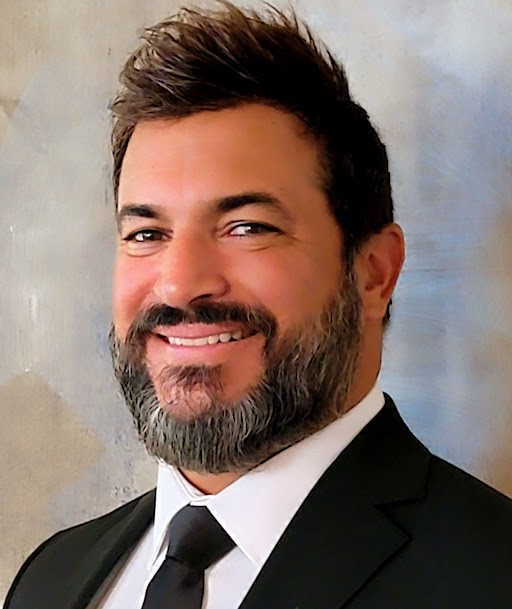Since 2001, we’ve seen countless health cost-saving strategies come and go, but none have stirred up quite as much buzz as health sharing plans.
This has led to thousands of Americans ‘jumping ship’ from their traditional insurance, saving up to 50% on monthly costs.
But did you know there’s a way to make your health sharing plan even more valuable? By combining a Health Savings Account (HSA) with your health sharing plan, you can significantly reduce your monthly expenses and save tax-free dollars for your future.
Let’s explore how this winning combination works.

Here’s how it works:
1.Start with Health Care Cost Sharing
Health Care Sharing Ministries (HCSMs) or medical cost-sharing plans aren’t traditional insurance.
They are fantastic alternatives offering up to 50% savings on monthly healthcare costs. Here’s how they work:
- Monthly share fee: Pay your share fee each month.
- Provider fee: Cover your provider fee when you receive medical services.
- Initial unshareable amount (IUA): This is like a deductible; once met, your remaining expenses are billed to your sharing organization.
2.Get Basic Care with a MEC Plan
Health sharing plans often don’t cover preventative care, so many members opt for a Minimum Essential Coverage (MEC) plan.
MEC plans are great for “filling the gaps” because they offer:
- $0 copay preventive care: Routine check-ups, vaccinations, and screenings.
- Low-copay sick services: Doctor visits and emergency treatment.
If your MEC plan is structured as a high-deductible health plan (HDHP), it can qualify for an HSA. This means you can combine your MEC plan with a health sharing plan and an HSA for a robust and cost-effective healthcare strategy.
3. Integrate a Health Savings Account (HSA) into Your Strategy
HSAs are tax-advantaged savings accounts that most health sharing members didn’t have access to until recently. Here’s the lowdown on HSAs:
- Annual tax-deductible contributions: The money you put into your HSA is tax-deductible.
- Tax-free growth: Your contributions grow tax-free and are there for when you need them.
- Tax-free withdrawals: Use your HSA funds to pay for qualified medical expenses without paying taxes on withdrawals.
How to Set Up Your HSA:
- Get HSA-qualified coverage: Ensure your MEC plan meets the IRS criteria for a high-deductible health plan.
- Open an HSA: Your benefits manager can help you set this up.
- Contribute annually: For 2024, you can contribute up to $4,150 for individuals or $8,300 for families. Those 55 and older can add an extra $1,000.
HSAs give you control over your healthcare dollars, making them a perfect fit for health sharing plans where you might pay more out-of-pocket initially but save in the long run.
Compare Pricing on the Best HealthShare Plans Available
Talk to Your Advisor About Pairing Your Health Sharing with an HSA
Your Personal Benefits Manager is a valuable resource in making your health care more affordable, sustainable, and personalized.
HSAs and Health Sharing Plans are as close to a ‘natural fit’ as you’ll ever find in this business. Both create opportunity to pay less for health costs, and both encourage the kind of empowered healthcare decision making that we’re all about at ColoHealth.
The only thing you have to do is make sure you’re enrolled in the right kind of MEC plan. Call today or click here to make an appointment. We can show you what’s available and see if there are other ways we can cut your costs going into the New Year.
Here are some additional articles on healthsharing programs: Best Healthshare Plans Comparison Guide 2026 | Can a Healthshare Plan Be HSA-qualified?
Here are some additional pages related to this article: MPowering Benefits HSA Health Sharing | HealthShare FAQ
Common Questions and Concerns
Can HSA Funds Cover All Health Sharing Costs?
No, HSA funds cannot cover all health sharing costs.
HSA’s are designed to pay for qualified medical expenses such as doctor visits, prescription medications, and certain medical equipment. However, expenses that do not qualify, such as monthly share fees or donations to the health sharing ministry, cannot be paid with HSA funds. Misusing HSA funds for nonqualified expenses can result in penalties and taxes.
Qualified medical expenses include:
- Doctor’s visits and co-pays
- Prescription medications
- Hospital services
- Dental and vision care
- Medical equipment like crutches or bandages
Non-qualified expenses:
- Monthly health sharing share fees
- Cosmetic procedures
How can you cover gaps not included in the Health Sharing Plan?
Health sharing plans may not cover all aspects of healthcare, such as preventative services or prescription drugs.
To fill these gaps, consider pairing your health sharing plan with a Minimum Essential Coverage (MEC) plan. An MEC plan can provide coverage for preventative care, like vaccinations and screenings, and may also offer low-copay options for sick visits and emergency treatment.
Steps to fill gaps:
- Identify missing coverage: Review your health sharing plan to identify what’s not covered (e.g., preventive care, prescriptions).
- Select an MEC plan: Choose a MEC plan that includes these services. Ensure the MEC plan is HSA-qualified if you want to contribute to an HSA.
- Use HSA for out-of-pocket costs: Use your HSA funds for any out-of-pocket expenses not covered by your health sharing or MEC plan.
How Can I Track HSA Expenses?
Keep records of your HSA withdrawals and save the receipts for all expenses paid with HSA funds.
This helps you verify that funds are used for qualified medical expenses and avoid potential penalties.
Tips for tracking HSA expenses:
- Keep receipts: Save all receipts for HSA-funded purchases, such as prescriptions, doctor visit co-pays, and medical supplies.
- Use a spreadsheet: Create a digital log of HSA transactions, including dates, amounts, and descriptions of expenses.
- Check your HSA statements: Regularly review your HSA account statements to match transactions with your receipts.
Why tracking is important:
- Ensures compliance with IRS regulations
- Helps in case of an IRS audit
- Maximizes your ability to save tax-free for medical expenses
What Happens to My HSA Funds if I Don’t Use Them?
One major advantage of HSAs is that the funds roll over year to year.
Unlike Flexible Spending Accounts (FSAs), there is no “use it or lose it” rule. Your HSA balance can continue to grow tax-free, providing a substantial savings opportunity for future medical expenses or even retirement.
Advantages of rollover:
- No expiration: Funds do not expire at the end of the year.
- Growth opportunity: Money in your HSA can be invested in various financial products, growing tax-free.
- Retirement savings: After age 65, you can withdraw HSA funds for non-medical expenses without penalty, though you’ll pay income tax on those withdrawals.

Hi! I’m Mike Montes, and I’m one of your Personal Benefits Managers. I like working with HSA for America because we’re creating solutions to healthcare problems. Our focus on money-saving alternatives like HSA plans and health sharing programs, and the variety of health share programs we offer, are what set us apart. Read more about me on my Bio page.



